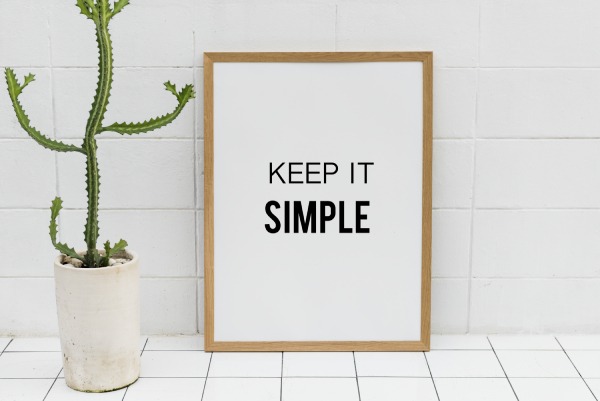How to Craft the Right Story for Your Company
People love to hear stories. As a brand, it is important that you understand the power your story has and how it can transform your entire identity. Think about some of the major brands, like Disney– they definitely understand the power their story has over their audience. Some companies, like Amazon, even have brand stories that are practically legendary.
How do you craft the right story for your brand? How do you use a story to showcase your authenticity? How can you use your story to build trust with your customers? These are important questions.
Use Stories to Create Trust

Storytelling has always been a powerful tool used in human interaction and communication. Since there were people, there have been storytellers.
It is ingrained in us as humans. In fact, research has shown that the human brain responds in a specific way to storytelling with effects shown in the motor cortex and the sensory portions of the brain. When we read or hear stories, we “feel” the experience in a way that does not happen with other types of information.
Another thing that happens when we hear stories is something called neural coupling. This is a process by which the speaker of the story and the listener to the story start to synchronize. Their brains start to interact in a very dynamic way. We aren’t talking about some sci-fi telepathy.
It is simply two people whose brains are affected in a similar fashion at the same time, a mirroring if you will. The listener’s brain starts to mirror the storyteller’s brain, giving the listener a greater, more empathetic understanding.
All of this mirroring and neural coupling lead to receptivity and trust. The fact of the matter is, stories lead to trust. That trust is exactly what you want from your customer base, isn’t it?
So, how do you create this compelling story that will have your customers’ neural coupling with your brand? You can start by asking the following questions.
Finding Your Brand’s Story
- How did it all begin? Every single brand has an origin story. You will need to sit down and brainstorm about the beginning of your business. Venture deep into the land of nostalgia. Ask questions like where did it start? Who came up with the initial idea? What problems were trying to be solved? Most companies or brands started with a single idea or spark that lead to something great.
- What is the company mission? Vision? Purpose? Values? Generally, when the foundation of the brand was laid out, there was some sort of guidelines established in order to keep everyone working toward the same goal. These values or the mission statement should be brought front and centre, and it will likely tie in easily with the origin story of the company.
- What does your brand offer? If you are in business, there is something that you are offering to your customer base, whether it is a product or a service. This should be your easiest question to answer!
- What trends affect your brand? For this question, you will want to look at both the negatives and the positives. Some trends will push your brand higher and others will knock the wind out of it. While you don’t want to craft your brand story around a very “now” trending topic, it is okay to think about an overall culture.
- What is your best customer story? This story shouldn’t be about the time a celebrity made a purchase or visited your shop. Instead, your customer story should revolve around a time your brand fulfilled its purpose and helped a customer in the exact way you set out to do when you first launched. Think about how it felt to provide that level of service.
Inject Your Personality
 Now that you have a lot of research material available to you, you can start thinking about how to put together your story. Remember, this is your brand story. It is not a sales pitch, and it is not an ad.
Now that you have a lot of research material available to you, you can start thinking about how to put together your story. Remember, this is your brand story. It is not a sales pitch, and it is not an ad.
A good brand story is injected with personality, and it sounds authentic (hopefully, it IS authentic!) It is a story that will help your customers connect with the brand and be inspired. You don’t have to write a full biography of each founding member, however. It should sound like a full story that is being told by a single person. Remember, your customers will be able to build trust with a person. It should always feel real if you want to garner that type of connection.
Keep Things Simple
 To get those connections and build that trust, you don’t have to have a complicated story. You aren’t writing an autobiography! When you try to pack too much into the story, you run the risk of drowning your readers/listeners under all the details.
To get those connections and build that trust, you don’t have to have a complicated story. You aren’t writing an autobiography! When you try to pack too much into the story, you run the risk of drowning your readers/listeners under all the details.
Your story should follow the three-part model, but you aren’t writing the next Harry Potter book. Yes, you should give your brand story a beginning, a middle, and an end. The beginning will be that initial problem that you set out to solve. Psst! You answered this in question one above. The middle of the story is the explanation of how you solved the problem, and the end of the story is your success. This is where you get excited about the brand you eventually became. You can pepper in as many details as seem relevant to the story arc without bogging it down. Keep it simple.
Offer Your Customers a Part in Your Story
If you’ve written your brand story well, your customers will want to be a part of it. Your goal should be to show them how to “buy” a part in your story: show them how to engage with your brand by purchasing your services or your product.
This may seem tricky since you aren’t making your brand story a sales pitch, but it can be achieved. To better understand this concept, you can look to the brand Patagonia. They have truly mastered this concept with the use of their term “worn wear.” This phrase represents the Patagonia products pointing out the fact that they are so rugged and can endure for years. They call their clothing items “stories” that their customers can wear, and it effectively makes the customers part of the Patagonia brand story.
With the addition of social media and hashtags, you can create a brand story that your customers will continue to share all on their own! Consider Patagonia again, by encouraging their customers to share their “stories,” they ensure that their brand story will continue to circulate and inspire other people to become part of the story.
Your Brand Story is a Powerful Tool
 A real story will keep on going and inspiring, connecting more and more people to your brand. Let your story inspire trust within your customer, and they will go out and share your story with others.
A real story will keep on going and inspiring, connecting more and more people to your brand. Let your story inspire trust within your customer, and they will go out and share your story with others.
Getting started with your brand story can seem daunting, but it will be well worth it when you see how it drives the connection between your company and your customers. Take the time to do the research, brainstorm, and write a powerful brand story and you will never regret it. Need help crafting your brand story? Contact us for a free consultation.





